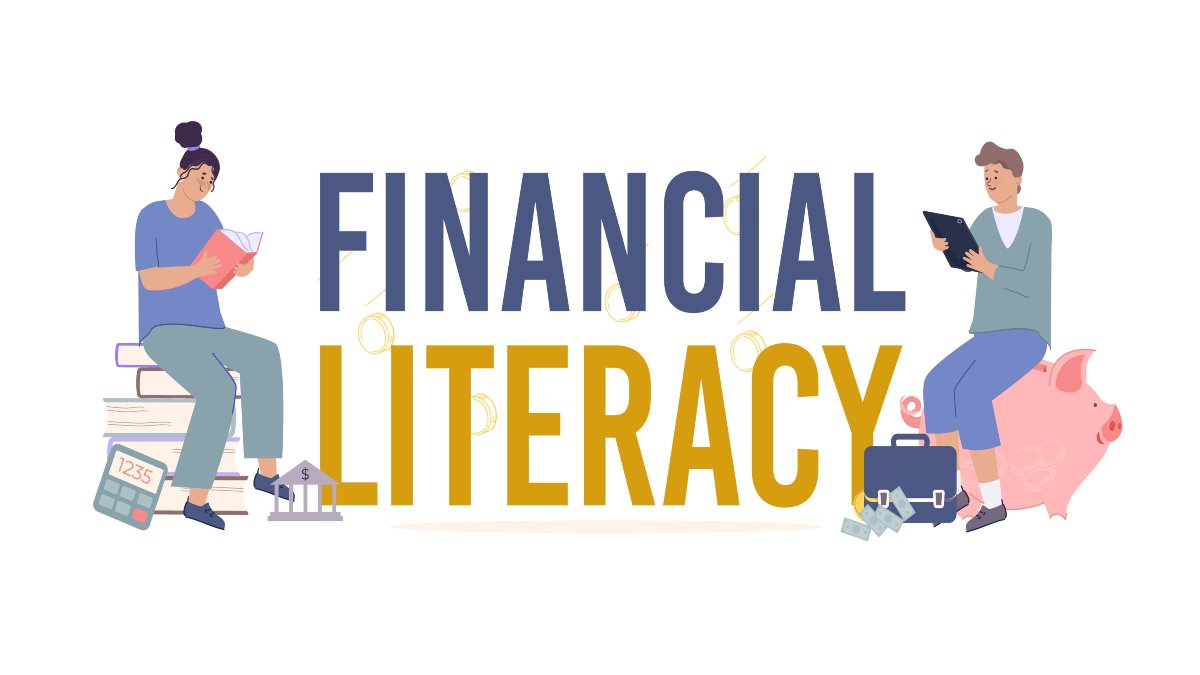How to Teach Financial Literacy to Kids Using Interactive Games

Probably one of the big lessons that parents can give their children is teaching them about financial literacy. Knowing money, saving and spending, and how to handle finances helps the kids grow into responsible adults. Of course, it does seem tricky talking to the kids about money; that is where interactive games come in. Although that sounds pretty bland, learning can be made fun with the incorporation of some creative activities and games teaching money skills to children. Let’s explore how we can teach financial literacy to kids through fun, easy, and interactive games that will make learning exciting!
Why is financial literacy important?
First, let me explain why financial literacy for kids is such an important thing before proceeding to the games. They also need to know the value of money and how it works. The earlier a child learns ways of handling money, the stronger the foundation laid for life is. This will be just like learning finance at home, which later on will make them more independent in making sound decisions over saving up for something that they want or even just being aware of how an allowance needs to be budgeted.
By focusing on financial literacy for kids, parents can show how money is earned, saved, and spent wisely. This knowledge will allow kids to build good money habits from a young age.
How Interactive Games Help Teach Financial Literacy?
These interactive games attract the children so much, and in the due process, they learn in a very jolly and entertaining way. While playing these money games, at the same time, children will be goal-oriented about the explanation of saving, spending, investment, and budgeting without getting tired or bored. Games take what might be a complex subject and turn it into fun, light learning.
Learning finance at home in real-life situations

Financial Literacy for kids can begin at home. Teaching the children about great issues of money, such as budgeting and saving. Establish patterns for good habits of money behavior. Let us now outline some games and activities that could be employed when teaching kids about financial education.
1. The Allowance Game
This game, however, is more suited to younger kids; the fundamental essence of the game teach the kids the values of earning and spending. In this game, kids will be provided with an allowance on which they will be asked to spend the same amount of money so as to satisfy certain desired needs.
How It Works:
Each child receives an allowance virtually of some sum of money. With the completion of work assignments, they can earn the privilege of spending their money in the game on toys or snacks, teaching a child how to make, save, and wisely use an allowance.
This game teaches financial literacy to kids through the budgeting of money and making choices that will affect their savings. Kids will also learn how to develop money skills by being able to identify wants from needs.
2. Store Shopping Simulation
A mock store is another great way to teach your kids about money. You can set up a mock store in your house wherein kids can "shop" using play money.
How It Works:
-
Price store products using common household items and label them.
-
Give children a set amount of play money to "spend" in-store.
-
Kids have to make their choices of what to buy, keep within budget, and even make decisions as to saving some money or spending it all.
-
It is a game for kids that provides them with financial literacy in the budgeting process, making decisions, and giving value to cash.
Kids will learn sound skills with money and what to buy first and save for later through this game process. This game teaches financial literacy to kids by helping them practice budgeting, decision-making, and understanding value
3. Board Games Similar to Monopoly Junior
Monopoly Junior: kid version of this classic monopoly-very appropriate for young kids to learn how to handle money and property.
How It Works:
-
Players buy up properties, collect each other's rents, and wheel and deal in play money. The children should make their supply of money last so as not to go bankrupt.
-
They are also going to learn how to handle cash flow, investment in property, and financial decision-making.
-
Monopoly Junior teaches children all the basic notions about financial management: play smart with money and at least save some bucks for the future. It also underpins home-based learning of finance in a tender and fun way.
4. Saving Jar Game
Of all ways, the saving jar game is the most straightforward way to teach financial literacy to kids. It is one of the easiest activities that allow your children to learn the purpose and values of saving cash.
How it works:
-
Give your child a transparent jar and have him deposit money inside the jar - such as loose changes or part of his allowance.
-
After which, sets some savings objectives for something that he wants to buy, for example, a toy or book.
-
Let them count every time they deposit money into the jar, how much they have saved so far and how much more they'll need to be able to buy something.
In this way, your kids get to game their savings and understand that over time, small donations add up to a big total. This is one of the greatest ways to teach money to your kids.
5. Online Money Games
Besides all these, several websites also offer free online games to kids teaching them ways of dealing with money. Some of the concepts they have been able to pick up through online games include ways of earning, spending, saving, and investing.
Some Popular Online Games are listed below:
Peter Pig's Money Counter: This is an online game to help younger kids learn the value of coins and saving.
Financial Football: Students answer finance questions to help their football team go down the field.
Savings Spree: This game teaches kids how various spending decisions affect savings goals. These innovative online interactive games will make learning finance at home no longer a chore but fun. Kids will learn at their very own pace and be in a position to pick up essential money skills for children through fun, interactive digital activities.
6. Real-life Scenarios through Role-Playing :
Another effective way of imparting financial literacy to kids is through role-playing. You could bring in real-life scenarios such as running a lemonade stand or organizing a mock restaurant.
How It Works:
Lemonade Stall: This can be arranged with the replica of the lemonade stand where kids sell juices to family members who come with fake money. It also makes them aware of how to price the product and make changes or understand profit.
Restaurant Role Play: In this play, kids either role-play as waiters or customers in a mock restaurant. They would buy lunch using fake money and understand how to carry out a transaction.
All of the above-mentioned games teach practical concepts of finance and build up money skills for children. Kids learn how companies work, how to tag prices, and how to calculate profit and cost.
7. Coin Sorting Game
This is a wonderful way of introducing the small ones to the value of various coins. This game will help them practice their counting.
How It Works:
-
Collect coins in different denominations and let your child sort them into money piles of value.
-
After this, your child now has to count up the values of each pile that he has separated.
-
Even more interestingly, you can set it up like a race to see who will be the fastest to sort and count them.
This game brings insight into financial understanding for children on the value of money sorting and counting and the value of various coins. It is one of the fun ways to learn finance, starting at home.
8. Bank Role-Play Game
They can learn quite a lot from playing the role of a banker. Let them practice and make a mock "deposit" or "withdrawal" of cash from their imaginary account.
How It Works:
Play money and bank slips are made.
-
They are all given the roles of either a banker or a customer.
-
They come to realize that in banks, money is put into the bank, and interest is earned off that money.
-
It's a mock banking game teaching kids banking.
-
It creates an enabling environment for kids to save their earnings for their future.
9. Investment Game
The older your children, the more it is time to talk about investments. A simple investment game can give them a basic sense of how money grows over time.
How It Works:
-
Give your child some play money and let him practice "investing" in fake stocks or businesses.
-
Once a week, go into the "market" and show him how those investments have grown or shrunk.
-
Explain to him that different kinds of investments yield different results with time.
-
The best investment and money-skill teaching game for kids because it introduces the kids to the world of investments.
-
The other great way of showing your children how to think long-term with money is over the matter of smart financial planning.
Conclusion:
Turn Financial Literacy for Kids into a Fun Activity. The main reason for teaching financial literacy to children need not be bland and serious. It can get so much friendlier by bringing in interactive games. Kids will learn basic enactment skills, board games, and online activities that serve them long after they pass out of their childhood.
These interactive games make learning about finances at home not only easy but also a place where kids get to practice specific real-life financial concepts. Be it saving, spending, budgeting, or investing; these games shall bring in the right money skill sets for the children. Start playing today and see your kids turn into financially intelligent individuals!
FAQs :
How do you introduce financial literacy for Kids?
The foundation of financial literacy for kids should be laid early in a child's life. As soon as they start understanding basic math, you can begin discussing simple money concepts. Use everyday activities like grocery shopping or counting their pocket money to introduce them to the value of money and basic calculations.
What are financial literacy activities?
A strong foundation of financial literacy for kids can help support various life goals, such as saving for education or retirement, using debt responsibly, and running a business. Key aspects of financial literacy include knowing how to create a budget, plan for retirement, manage debt, and track personal spending.
What is the purpose of money for kids?
Money can be used to buy things that you want, such as toys, games, and candy. It can also be used to buy the things that you need, like food, clothing, and housing. Outside of your individual wants and needs, money has a purpose on a global scale.
We hope you liked the above article. Please do not forget to share this blog with your friends and community members to spread awareness of "Financial Literacy for Kids”
NCERT Solutions | Sample Papers | CBSE SYLLABUS| Calculators | Converters | Stories For Kids | Poems for kids| Learning Concepts I Practice Worksheets I Formulas | Blogs
Admissions Open for 2025-26
CBSE Schools In Popular Cities
CBSE Schools in Bangalore
CBSE Schools in Mumbai
CBSE Schools in Pune
CBSE Schools in Hyderabad
CBSE Schools in Chennai
CBSE Schools in Gurgaon
CBSE Schools in Kolkata
CBSE Schools in Indore
CBSE Schools in Sonipat
CBSE Schools in Delhi
CBSE Schools in Rohtak
CBSE Schools in Bhopal
CBSE Schools in Aurangabad
CBSE Schools in Jabalpur
CBSE Schools in Jaipur
CBSE Schools in Jodhpur
CBSE Schools in Nagpur
CBSE Schools in Ahmednagar
CBSE School In Tumkur

